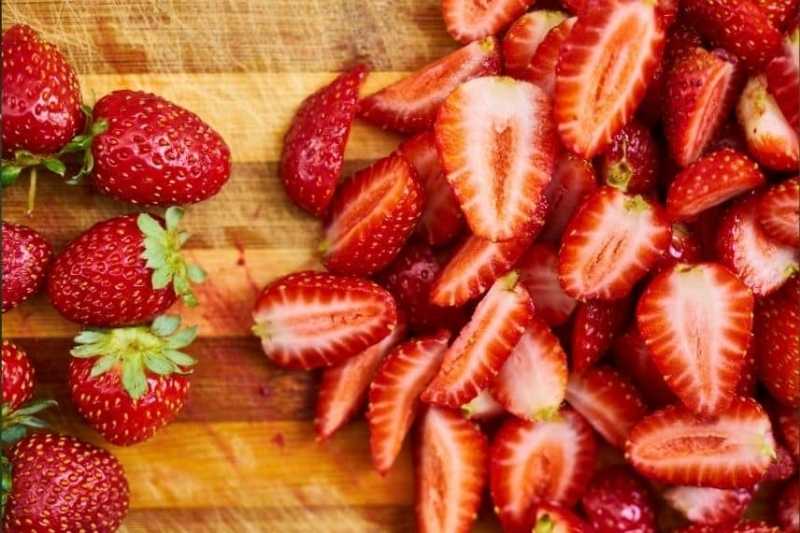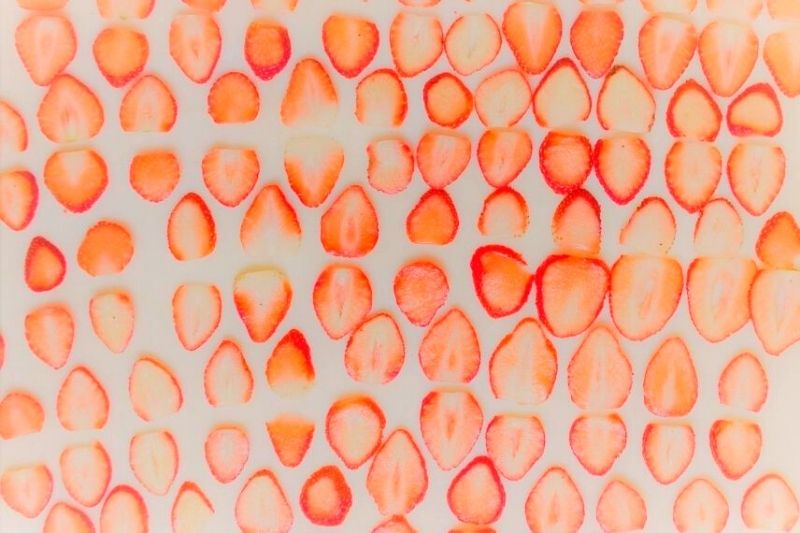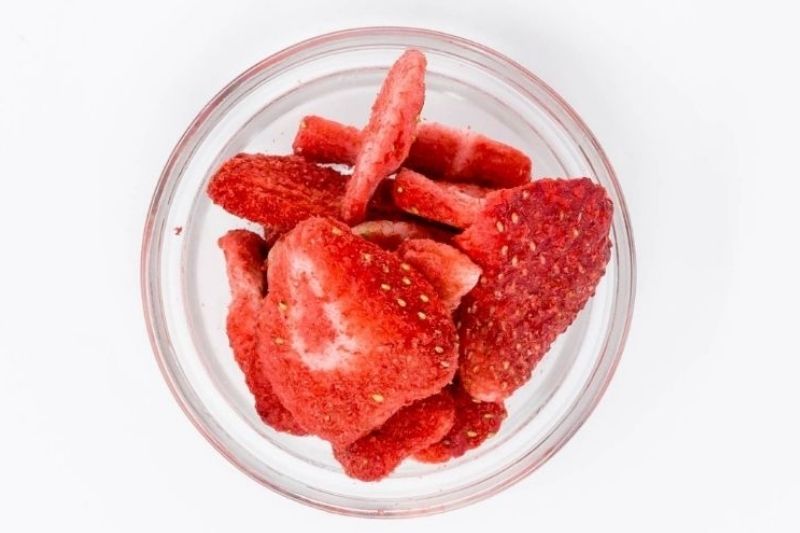Strawberries, those delightful little treats of summer that we all love, are a favourite among those with a sweet tooth. Fresh, they only keep for one or two days. So why not make dried or dehydrated strawberries to preserve them longer? Especially since dehydrated strawberries are rich in fibre and vitamins. Perfect for brightening up your aperitifs, cereals and many other recipes!
Here are our tips for making beautiful homemade dried or dehydrated strawberries from your own strawberry plants:

When to make dried strawberries?
Depending on the variety, the strawberry harvest runs from May to October. Non-perpetual varieties will produce from May to June, whereas perpetual varieties produce from May until October for the most productive ones. You can thus make dried strawberries throughout this summer period. Be sure to select ripe but firm strawberries. Ideally, you should dry fresh strawberries right after harvest.
What are the best strawberry varieties for drying?
Here is our selection of the best strawberry plants for making your dried strawberries:
- Charlotte strawberry, with its sweet and slightly tangy taste, will give you lovely crunchy and firm fruits. This perpetual variety will produce beautiful strawberries from June to October. This variety is also available as organic.
- Ciflorette strawberry, with its very rich taste and good balance between sweetness and acidity, will give you a good fruit yield from May to June. This variety, also available as organic, can be paired with other perpetual varieties.
- Gariguette strawberry is an early variety. Thus, you'll have fruits with firm flesh, fragrant, sweet and slightly tangy, from May to June. Ideally, pair this variety with other perpetual strawberry plants. Gariguette strawberry is also available as organic.
- Mara des Bois strawberry, with its very fragrant wild strawberry taste, is a perpetual variety offering fruits from June to October. They are also available as organic.
- Cirano strawberry, with firm, sweet and fragrant flesh, is also a perpetual variety offering fruits from June to October.
Other strawberry varieties will also be perfect for making your dehydrated strawberries, as long as the chosen fruits are firm and ripe. Feel free to select your strawberry plants from our varieties.
How to make dried strawberries?
There are 2 techniques, the 1st is to dry your strawberries in the oven. The second, which we recommend most, is to use a dehydrator to obtain dehydrated strawberries. This second technique should not be confused with freeze-dried strawberries. Indeed, freeze-drying is an industrial technique that removes water from food by freezing. Here are the 2 techniques detailed step by step:

Steps to make dried strawberries in the oven:
- Wash the strawberries
- Dry the strawberries with a paper towel.
- Remove the stems
- Slice your strawberries. Note that the thicker the slices, the longer the cooking time. For a shorter duration, we recommend slicing into 2 to 3 mm thick pieces using a knife or mandoline.
- Line your baking tray with parchment paper and arrange your strawberries without overlapping.
- Bake at 140°C (thermostat 4-5) for 30 minutes.
- Turn your strawberries over and bake for another 30 minutes, checking every 10 minutes towards the end. The colour of your strawberries should be deeper without turning black. If your strawberries still seem moist, you can add 10 more minutes of baking time under supervision.
- Remove your tray from the oven and let cool before peeling off your dried strawberries.
- Note: Your strawberries must be perfectly dried for storage, don't hesitate to put them back in the oven for a few more minutes if in doubt. You can also remove dried strawberries from the oven as they're ready to prevent them from blackening.
Steps to make dehydrated strawberries:
- Wash the strawberries
- Dry the strawberries with a paper towel.
- Remove the stems
- Slice your strawberries. Note that the thicker the slices, the longer the dehydration time. We recommend slicing into 2 to 3 mm thick pieces using a knife or mandoline.
- Arrange your strawberries on your dehydrator tray without overlapping.
- Dehydrate your strawberries at a temperature between 50 and 60°C for 6 to 10 hours depending on the thickness of your strawberries, and whether you prefer them chewy or crispy.
- Let cool by turning off and opening your dehydrator.
- Check that your strawberries are completely dry. If not, put them back in the dehydrator for 1 more hour.
How to store dried strawberries?

Dehydrated strawberries in a jar - photo by Marco Verch
You can store your dehydrated or dried strawberries in a glass jar, filled to 3/4. During the first week, we recommend shaking the jar to distribute any residual moisture evenly.
Note that if condensation appears on the jar, it means your strawberries weren't dehydrated enough and there's too much moisture. You'll then need to put them back in the oven or dehydrator for a while longer.
Store your jar for 1 or 2 months in a dark, unheated and dry place.
What recipes can you make with dried strawberries?
You can use your dried strawberries in many ways! Whether snacking on them directly or serving them as appetisers, here's a small list of ideas:
- add your dehydrated strawberries to your cereals
- add a strawberry to your tea or infusion
- Rice pudding with dried strawberries
- Dried strawberry cookies
- Dessert cream with dried strawberries
- Fromage blanc with dehydrated strawberries.
- Far breton with dried strawberries
- as decoration for cakes and ice creams
- muffins and cakes with dried strawberries
- madeleines with dehydrated strawberries.
Note: you can rehydrate your strawberries if you want to use them in a tart, for example. Simply soak your strawberries in warm water for several hours.

Cereal with dried strawberries
What are the benefits of dried strawberries?
Strawberries are fruits containing a lot of water. As a result, dried strawberries are much richer in fibre and minerals such as calcium, potassium, magnesium, vitamins, iron and antioxidants. Thanks to their concentration, dehydrated strawberries are also rich in energy and carbohydrates, a bonus for athletes!
To go further:
- our buying guide: choosing strawberry plants
- strawberry plants: planting, growing, caring
































Comments